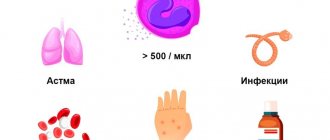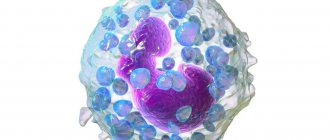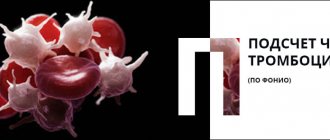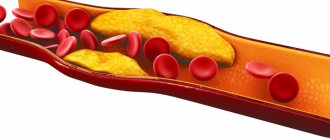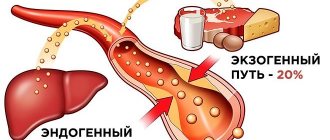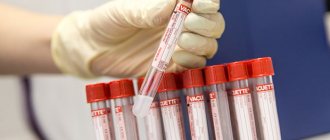Atherosclerosis
Diabetes
Arthritis
Gout
7246 14 October
IMPORTANT!
The information in this section cannot be used for self-diagnosis and self-treatment.
In case of pain or other exacerbation of the disease, diagnostic tests should be prescribed only by the attending physician. To make a diagnosis and properly prescribe treatment, you should contact your doctor. We remind you that independent interpretation of the results is unacceptable; the information below is for reference only.
Cholesterol: indications for use, rules for preparing for the test, interpretation of results and normal indicators.
What you need to know about cholesterol?
The content of the article
Cholesterol is a lipoprotein. Lipoprotein is a combination of fats and proteins. Most of the cholesterol (80%) is produced in the liver, 20% of it enters the body with food. A person needs no more than 300 mg of cholesterol per day.
Cholesterol performs several important functions:
- responsible for the formation of cell membranes, maintaining their strength and elasticity;
- participates in the production of bile by the liver;
- participates in the synthesis of vitamin D;
- participates in the synthesis of sex hormones;
- protects the nervous system;
- participates in metabolic processes.
Possible dangers
An increase in cholesterol in the blood provokes the development of atherosclerosis. The degree of harm of the organic compound was established experimentally. Experimental rabbits were fed artificially synthesized cholesterol. As a result of this diet, atherosclerotic plaques began to form in the rabbits.
An increase in cholesterol increases the negative impact of pathological processes occurring in the body. Problems with the cardiovascular system are especially aggravated. The body masks any damage to blood vessels with cholesterol, which leads to the formation of plaques, narrowing of the lumen of blood vessels and impaired blood flow.
What is cholesterol?
Low-density cholesterol (LDL)
– this is “bad” cholesterol. It settles on the walls of blood vessels and forms plaques. They grow over time and narrow the arteries, complicating or completely blocking blood supply to the heart and brain. As a result, the supply of oxygen and nutrients to these organs is disrupted.
High LDL levels are a leading cause of cardiovascular disease, heart attack, heart attack and stroke. LDL also has positive benefits, for example, it neutralizes harmful toxins.
Sources of “bad” cholesterol are animal products: pork, beef, bacon, chicken leg and fried skin, sausage, egg yolks, sour cream, cream, hard cheeses, cottage cheese, chocolate.
High density cholesterol (HDL)
- This is “good” cholesterol. It plays a structural role in cells, takes part in the synthesis of hormones and vitamin D. The liver produces bile acids, which help process fat in the small intestine, from “good” cholesterol.
“Good” cholesterol binds “bad” cholesterol and heavy triglycerides, removes them from cells, and transports them to the liver for processing. It helps prevent cardiovascular diseases.
Sources of “good” cholesterol: wild salmon, mackerel, tuna, halibut, avocado, olive oil, walnuts.
Triglycerides
are part of very low-density lipoproteins (VLDL), which are involved in the formation of cholesterol plaques. Increased levels of these fats in the blood can lead to heart disease and diabetes. After eating, the body converts excess calories into triglycerides. They accumulate in fat cells.
Problems arise if cholesterol levels exceed 5.0 mmol/L.
It is important to know the blood levels of all types of cholesterol. This:
- total cholesterol;
- low-density cholesterol (LDL) or “bad cholesterol”;
- high-density cholesterol (HDL) or “good” cholesterol;
- triglycerides.
Complications from high cholesterol
High cholesterol is dangerous because it increases the likelihood of developing the following diseases:
- atherosclerosis – accompanied by the formation of atherosclerotic plaques, decreased elasticity of vessel walls, and narrowing of the arteries;
- coronary heart disease – accompanied by narrowing of the coronary artery, which causes myocardial hypoxia and disrupts its functioning;
- hypertension - manifests itself as high blood pressure, against the background of which stroke, heart attack, heart failure and other serious complications are likely;
- stroke - an acute disorder of cerebral circulation as a result of blockage or rupture of a cerebral vessel;
- heart attack – death of a section of the heart muscle due to loss of blood supply.
Most of these diseases are known to be fatal.
High cholesterol at a young age causes early disability and mortality. Due to the increased concentration of LDL, the walls of blood vessels become less elastic, atherosclerotic plaques are deposited on them, which impede blood flow. As a result, blood clots form, which cause heart attack and stroke.
Signs of High Cholesterol:
- heart pain, angina attacks;
- heaviness, pain in the legs even after minor physical exertion;
- the appearance of blood clots with mild bleeding;
- yellow spots on the skin, mainly in the eye area, wen.
More severe symptoms of high cholesterol in men and women appear when LDL levels are at critical levels. This may be a pre-stroke or pre-infarction condition.
The earlier high cholesterol and its causes are identified, the more effective the treatment.
Causes of High Cholesterol
Causes of high cholesterol can be:
- overweight;
- eating large amounts of sweet and fatty foods;
- smoking;
- alcohol consumption;
- sedentary lifestyle;
- pregnancy.
High cholesterol is characteristic of certain diseases:
- congenital hyperlipidemia;
- pathologies of the hepatobiliary system;
- pancreas cancer;
- diabetes;
- hypothyroidism;
- kidney pathologies.
Treatment methods
To normalize the level of fatty alcohol, you should take medications belonging to the group of statins. This category of drugs is ineffective in treating people over 70 years of age. The use of statins does not help reduce the risk of developing pathologies of the cardiovascular system. Self-treatment with statins is unacceptable!
During therapy aimed at reducing cholesterol in the blood, you should:
- maintain a physical activity regime;
- fight excess body weight;
- establish a balanced diet;
- give up alcoholic beverages and smoking.
Diets that help lower cholesterol
First of all, it is important to review your own menu. Animal fats present in the diet should be reduced, but they should not be completely excluded from the diet. The daily menu should contain in small quantities:
- cheese;
- milk;
- low-fat kefir;
- eggs, etc.
Food containing trans fats is completely removed from the menu. Fast foods should be a thing of the past if the goal is to reduce the percentage of organic compounds. In the case when cholesterol adjustment occurs in the last months of pregnancy, you should slightly limit unhealthy foods and make dietary changes.
During treatment, a diet must be maintained if the patient suffers from:
- overweight;
- metabolic disorders;
- liver pathology;
- kidney pathology.
It is also important to control high/low cholesterol during pregnancy
If the level of organic compounds in the blood increases, the diet should be supplemented with the right fats, which are found in large quantities in sea fish, olive oil, nuts, and legumes. This category of products has a positive effect on lipid metabolism. The following should be completely excluded from the daily menu:
- mayonnaise and fatty sauces;
- cakes, buns, pastries;
- smoked products;
- fast foods;
- Palm oil;
- margarine.
Vitamin B and folic acid should be added to the diet. A deficiency of useful elements often leads to the formation of atherosclerotic plaques. A table saturated with valuable microelements stabilizes total cholesterol.
The basis of nutrition should be:
- cabbage;
- beet;
- mushrooms;
- fresh fruits;
- fresh vegetables;
- greenery;
- buckwheat and rice;
- lean meat;
- kefir.
Dish recipes
Food should either be baked, boiled, stewed or steamed. It is best to give preference to simple recipes for healthy dishes. Several times a week you should bake sea fish in the oven with onion and tomato rings. For fish dishes, you can serve a light salad prepared with cucumbers, avocado, herbs and vegetable oil.
You should enjoy stewed rabbit twice a week. Tender dietary meat is cut into pieces and stewed over low heat together with onions. You can use buckwheat porridge as a side dish.
Causes of very low cholesterol
Causes of very low cholesterol may include:
- acute infections;
- sepsis;
- extensive burns;
- fasting and a very strict diet;
- eating too many fatty acids (omegas).
Very low cholesterol can be a sign of diseases:
- hypolipoproteinemia;
- hyperthyroidism;
- liver cancer and other oncological diseases;
- liver cirrhosis, especially in the later stages;
- chronic anemia;
- bone marrow pathologies;
- chronic pulmonary pathology.
Do healthy people need to monitor their cholesterol?
Often people begin to monitor certain indicators when problems appear and their health worsens, but prevention is always better than cure. The concept of “healthy person” is too general. You may not have liver or metabolic problems now, but that doesn't mean you won't have them in the future. People with identified lipid metabolism disorders should regularly undergo cholesterol tests, but others should not check the strength of their body.
If your diet often contains fatty foods, high-calorie foods, and in general you like to indulge in sweets, then sooner or later this will increase your cholesterol. Other cardiovascular risk factors may also have an impact. As a result, you risk getting atherosclerosis with all the attendant consequences.
Cholesterol norm
If, according to the test results, your cholesterol is normal, then there is no serious cause for concern. Provided you follow the rules of a healthy diet and a healthy lifestyle, the next examination can be done in a few years.
If the cholesterol level is elevated ( from 5 to 6.4 mmol/l or more
), then it’s worth monitoring it every six months to observe the dynamics. At the same time, you need to reconsider your diet, remove foods that increase cholesterol, and also give up bad habits: smoking and drinking alcohol. Your doctor should warn you about additional risks associated with the presence of concomitant diseases.
over 6.4 mmol/l is considered a high-risk level.
. This indicator indicates the need for specialized treatment, since there is a high probability of developing coronary heart disease and other cardiovascular complications. The treatment program should be drawn up by a doctor based on the tests performed, including identifying the level of LDL, HDL and triglycerides.
How to lower cholesterol levels?
To reduce the amount of cholesterol in the blood, you need to change your lifestyle:
- Watch your weight. An increase in body weight of half a kilogram increases cholesterol levels by two units.
- Fats containing saturated fatty acids increase blood cholesterol levels. Therefore, choose products containing polyunsaturated fatty acids: olive oil, avocado, rapeseed oil, nuts.
- Reduce your egg intake to three per week.
- Eat more legumes. Nutritious and cheap, they contain water-soluble fiber - pectin. It coats cholesterol and removes it from the body. All legumes have the ability to lower cholesterol.
- Eat more fruits. Fruits also have the ability to lower cholesterol levels because they are rich in pectin.
- Add oatmeal to your diet. Oat bran lowers cholesterol levels because it is rich in pectin-like whey.
- Corn bran is effective in reducing cholesterol levels.
- Carrots lower cholesterol levels because they contain pectin.
- Eat garlic. Fresh garlic reduces the level of harmful fats in the blood.
- Exercise is the main way to increase levels of protective high-density lipoproteins. And they reduce the level of unwanted LDL.
- Do not smoke! Smokers have low levels of “good” cholesterol.
Carefully following these recommendations will help reduce cholesterol levels by 10-12%.
If following a diet for three to six months does not lead to a decrease in total cholesterol levels to normal - <5 mmol / l, then the risk of developing atherosclerotic disease remains high. Therefore, your doctor may prescribe a cholesterol-lowering medication.
Medicines that lower cholesterol levels:
- statins Zocor, atorvastatin are considered the best, they reduce cholesterol levels by 20-40%, alleviate the course of diseases caused by atherosclerosis, and reduce mortality from cardiovascular diseases;
- resin sequestrants – cholestyramine, colestipol;
- nicotinic acid and its derivatives – enduracin, niacin – reduce cholesterol levels by 30-40%;
- fibrates – fenofibrate, gemfibrozil.
The main thing is not to self-medicate based on advertising of nutritional supplements. Of these, only drugs with soluble fiber that act on cholesterol are effective. However, their effectiveness cannot replace a healthy lifestyle and normal nutrition.
Cardiologists around the world believe that every person over 20 years of age needs to know their cholesterol level. If cholesterol is elevated, this is a dangerous factor that contributes to the development of atherosclerosis and severe cardiovascular diseases.
If you find an error, please select a piece of text and press Ctrl+Enter
Ways to reduce low-density lipoproteins
Elevated LDL requires dietary adjustments, giving up bad habits, and sometimes its level decreases only with appropriate drug therapy.
First of all, it is necessary to adjust the menu to exclude harmful products from it. Healthy foods that can lower bad cholesterol include:
- chicken or turkey breast,
- veal,
- herring,
- salmon,
- tuna,
- mackerel,
- low-fat sour cream,
- yogurt,
- vegetables and fruits,
- durum wheat pasta,
- legumes,
- mineral water.
Medicines that affect cholesterol levels in the body should only be taken on the advice of a doctor.
There are also foods that you should absolutely not eat, as the level of bad cholesterol will increase even more:
- fatty meats,
- sausages,
- crabs,
- squid,
- egg yolk,
- cream and processed cheeses,
- fried vegetables,
- confectionery,
- carbonated drinks.
You can reduce bad cholesterol levels not only by adjusting your diet. This will also be facilitated by following the following recommendations:
- Try to avoid stressful situations. Increasingly, doctors agree that stress provokes the appearance of atherosclerotic plaques on blood vessels.
- Physical activity. Three 30-minute workouts per week are enough to start reducing LDL.
- Quit smoking and strong alcohol.
Traditional methods for reducing bad cholesterol
Traditional medicine also offers ways to reduce bad cholesterol. There are many recipes, the most popular are:
- Hawthorn infusion – 2 tbsp. l. flowers pour 3 tbsp. boiling water and boil for 10 minutes, leave until cool and take 1 glass three times a day half an hour before meals.
- Sweet clover officinalis. Take 4 tsp. herbs, pour 3 tbsp. boiling water, boil for 10 minutes and leave for 2 hours. Drink 3 times a day 20 minutes before meals.
- Rowan. 2 tbsp. l. fruits pour 600 ml of water and leave, drink 1 tbsp. before main meals.
- Pumpkin. It is necessary to include pumpkin seeds in the diet in an amount of at least 40–50 grams per day.
Sometimes patients need drug therapy to lower cholesterol. For this purpose, drugs of two groups are used: statins, or cholesterol absorption inhibitors, and lipid-lowering drugs. It is prohibited to take such drugs on your own, as they can cause significant harm to the body if the dosage is chosen incorrectly. If medications are prescribed, they should be taken according to the dosage regimen.
Controlling cholesterol levels in middle-aged people is very important. Timely measures to reduce bad cholesterol or increase good cholesterol can reduce the likelihood of heart attack and stroke and improve a person’s quality of life.
Changes in cholesterol standards by age in women
Differences in metabolism and the functioning of body systems at each stage of life also affect cholesterol levels. Over the years, due to a slowdown in metabolism, it inevitably increases. Changing total cholesterol averages for women:
- up to 5 years: from 2.90 to 5.18 mmol/l;
- 5-10 years: from 2.26 to 5.30 mmol/l;
- 10-15 years: from 3.21 to 5.20 mmol/l;
- 15-25 years: from 3.10-5.5 mmol/l;
- 25-35 years: from 3.37 to 5.96 mmol/l;
- 35-40 years: from 3.63 to 6.27 mmol/l;
- 40-50 years: from 3.81 to 6.53 mmol/l;
- 50-60 years: from 4.45 to 7.77 mmol/l;
- 60-70 years: from 4.45 to 7.69 mmol/l;
- 70 years or more: from 4.48 to 7.25 mmol/l.
A significant increase in the upper limit of indicators in women over 60 years of age is explained by the decline of ovarian function. During this period, the risk of obesity, type 2 diabetes, cardiovascular diseases, and osteoporosis increases.


